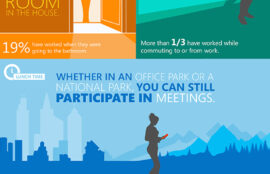 Small changes go a long way in creating a healthier planet for years to come. Whether you rent an apartment or an entire house, there are several ways you can lead a more sustainable lifestyle.
Small changes go a long way in creating a healthier planet for years to come. Whether you rent an apartment or an entire house, there are several ways you can lead a more sustainable lifestyle.
Thankfully, you don’t have to live off-grid or have a solar roof to reduce your environmental impact. In fact, renting a space is the perfect chance to build eco-friendly habits and make sustainability your main priority.
Here are seven ways to be a more eco-conscious renter.
1. Save More Energy
You can improve your unit’s energy efficiency with only a few steps.
A draft blocker is a great way to keep unwanted hot or cold air coming in through windowsills or doorways. You can even make one yourself by recycling an old shirt or pair of pants. Simply cut the fabric to match the length of the doorway, sew it into a tube shape, stuff it with stuffing or other cloth and stitch it closed. Preventing drafts from creeping in will reduce your need to run the air conditioner or heater.
Wearing the right clothes for the weather is another simple way to improve temperature comfortability. A sweater may not be the best attire if it’s midsummer. Likewise, you’ll want to use a blanket and wear socks during the winter to prevent a chill.
Additionally, the average American family uses 40 gallons of water daily, with showers accounting for 17%. Save water by taking shorter showers or changing an old showerhead to a water-conserving model.
Laundering your clothes only when you’ve accumulated enough for a full load is another way to save energy and decrease water consumption. Also, make a conscious effort to use cold water, since running hot water uses more power.
2. Buy Secondhand Or Sustainable Décor
Decorative tastes change over time, and you may feel tempted to purchase new furniture when you relocate to a different apartment. However, the U.S. Environmental Protection Agency reported that furniture waste reached 12.1 million tons in 2018 — about 4.1% of the nation’s total landfilled solid waste.
If you’re tired of your rental unit’s current look, spruce up the space with reclaimed pieces or sustainable home essentials instead. Thrift stores, antique malls, local markets and e-marketplaces are excellent sources for used furniture and quality decor at an affordable price.
Otherwise, look for new items made from sustainable materials and read up on brands before buying. Some furniture pieces may be certified by the Forest Stewardship Council (FSC), meaning wood products have met stringent environmental standards during harvesting and throughout the supply chain.
3. Build A Local Share Community
Minimize your environmental impact by creating a local share community, which is a trade economy of goods and services.
For example, community members may share appliances, devices, exercise equipment, laundry machines, ingredients, clothing or anything else you can think of. A few suggestions to make this economic model work to your advantage include the following:
- Create a forum — WhatsApp, Facebook group, etc. — where building residents and neighbors can reach out for assistance or ask to borrow an item.
- Ask your local share community if you can add a few grocery items to someone’s shopping list to save on transportation emissions.
- Create a book swap or secondhand library in your building.
- Host donation drives for various items or activities, such as board games, for others to use.
Get to know the residents of your building by introducing yourself to others within common areas. You’re bound to find someone interested in creating a local share community with you.
4. Reduce Food Waste By Recycling And Composting
The U.S. Department of Agriculture reports that the United States wastes about 30%-40% of the food supply at the consumer and retail levels. However, you can play a critical role in helping the U.S. meet its goal of minimizing 50% of its food waste by 2030.
Although your rental space may be limited, ensure you have two bins in your kitchen to make separating trash from recyclables easier. You might also decide to build a small compost box on your balcony for leftover scraps.
Starting a meal-prepping routine is another great way to reduce food waste while renting. It prevents needing to throw away rotten ingredients by using all of the week’s groceries in your recipes right away.
5. Switch To LEDs
Swapping out incandescent lightbulbs for energy-efficient light-emitting diodes (LEDs) is an affordable and easy upgrade for a greener apartment or rental property.
LEDs typically consume about 75% less energy than traditional incandescent bulbs, with an end-of-life cycle that lasts 30 times longer. Consider adding LEDs to the following light products:
- Chandeliers
- Ceiling fan lights
- Lamps
- Appliances
- Under-cabinet lighting
- Pantry lighting
- Recessed lights
- Holiday lights
It may not seem like a significant switch, but LEDs are an eco-friendly initiative you can take to live more sustainably as a renter or tenant.
6. Go Green With Plants
An apartment probably won’t come with a backyard for a garden. However, you should still consider adding a few indoor plants to improve air quality and create a more natural aesthetic.
A recent study found that indoor plants, such as peace lilies, corn plants and fern arums, can reduce nitrogen dioxide pollutants by 20% in small spaces.
If you’re lucky enough to have a balcony attached to your unit, you can also add potted plants to grow fresh produce or herbs.
Space might be limited, of course — so get creative with flower boxes, smaller pots on your windowsill or a vertical garden on a wall. Even better, if you start composting, you can use the soil to grow your plants.
7. Speak To Your Landlord
You might pay the rent, but your landlord ultimately maintains control. As such, living more sustainably in your rental may require you to speak to them about your concerns.
Educate your landlord about generating greater energy efficiency with eco-friendly appliances and upgraded heating and cooling systems. For example, an older building may have outdated pipes or electrical wiring and need frequent maintenance. They may be keener to make improvements after you explain how advanced technologies can help save them money on repairs and enhance the building’s energy use.
Your landlord may not always see eye-to-eye with you or make any changes, but you can at least rest assured that you did your part in broaching the subject. However, a good landlord will be open-minded toward your suggestions and aim to implement positive changes.
Living in a rental unit or home doesn’t mean you can’t have a greener lifestyle. There are plenty of ways to make your place more eco-friendly and develop a sustainable community with fellow renters.
Original article here






















Sorry, the comment form is closed at this time.